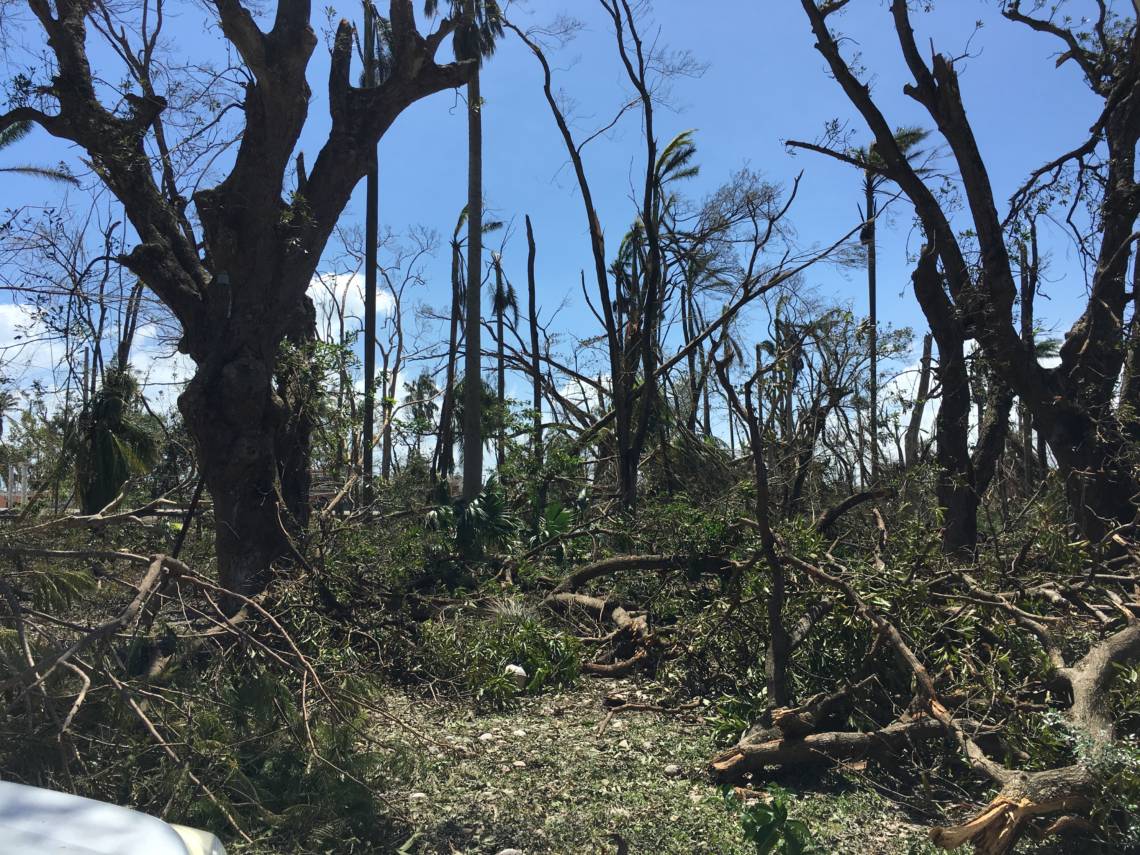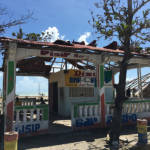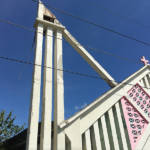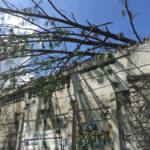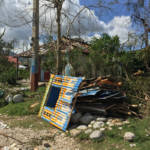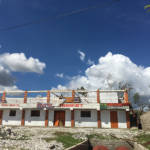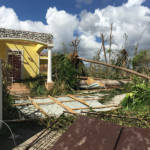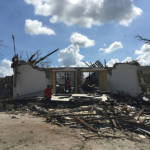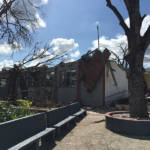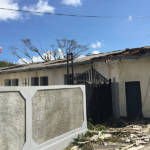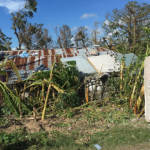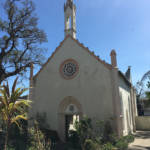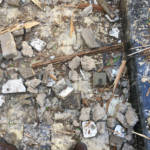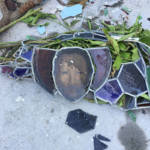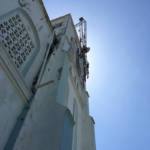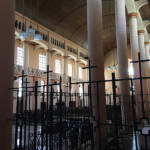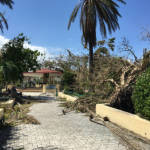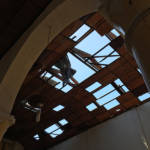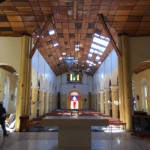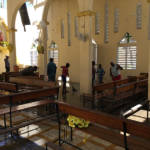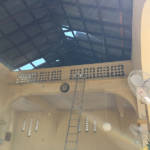Beverly St. Come from Miyamoto’s Haiti office and I arrive at the meeting point. Not knowing what to expect, we pack up the car and assemble our team. Two engineers from PROCHE (Proximité Catholique avec Haiti et son Eglise), Ing. Rudy and Ing. Aimé, join us. As of Friday morning, there was little information about the road or what to expect because communication in the area we were heading to was just beginning to come back online.
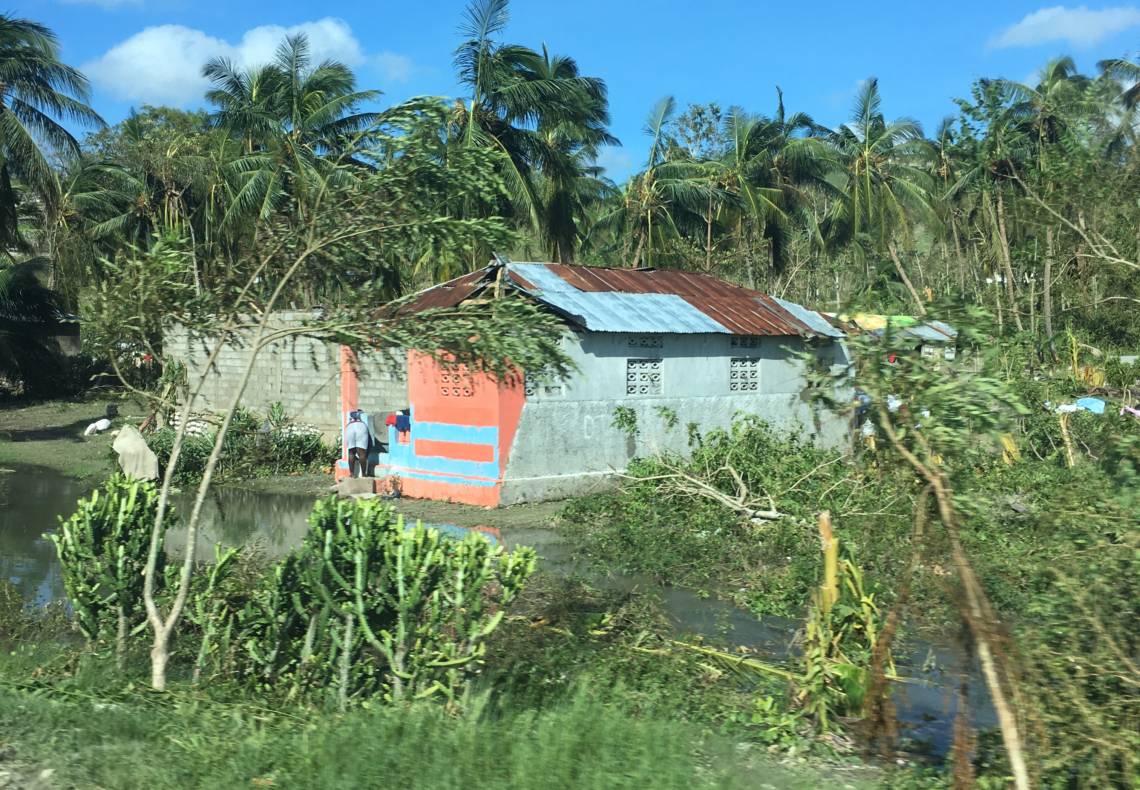
As our drive progresses, we start seeing signs of damage. The first being damaged banana trees around Léogâne. As we keep going the damage to the banana trees increases and other trees branches were broken off as well.
We arrive at the downed bridge just before Petit-Goâve. There are many cars and crossing is a slow process. Getting across takes about 25 to 30 minutes early in the morning.
Once across, we drive through the town of Petit-Goâve. There are some signs of damage along Route Nationale No. 2; it’s mostly trees branches and debris. We continue to head toward Les Cayes. The destruction is starting to get worse the closer we get. We start seeing the first signs of property damage, roads, buildings, churches and other structures all around Miragoâne. We are getting closer to Les Cayes. From the road, we can see the roofs of many houses showing signs of increasing damage.
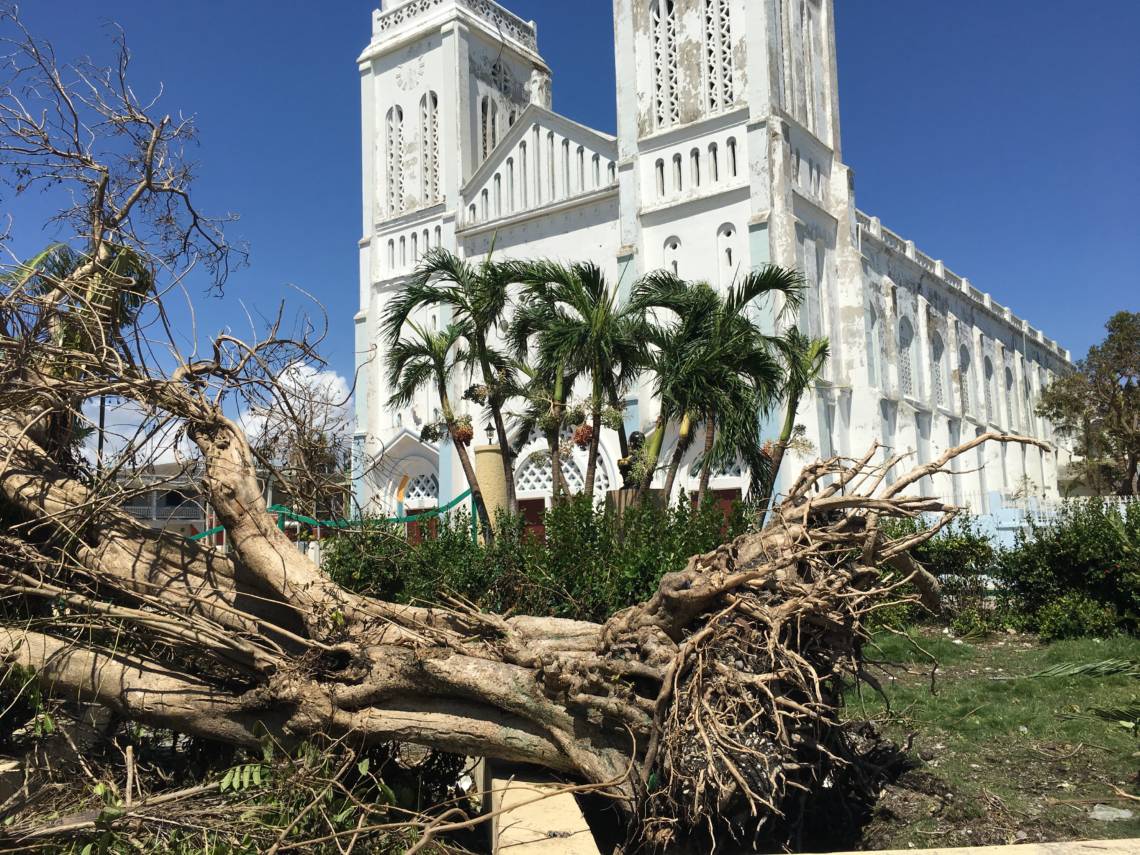
We finally arrive in Les Cayes. The roads were rough, and we were glad to be out of the car. Our team starts the damage assessments, visiting many chapels, churches, and cathedral sites. All of them sustain differing levels of damage, but none are intact. The square of Les Cayes is picturesque with the cathedral as the backdrop. In contrast, the majority of surrounding trees lay destroyed, some completely uprooted. Throughout Les Cayes, we see signs of damage. Multiple cell towers are down. The city is busy with scores of people working on cleaning up as we start our assessments.

In all we visit six churches; the Cathedral Des Cayes, the Chapelle St Joseph. We see roofs partially or entirely torn away. We approach one church from the front that is missing its bell. As we move closer, we can see that the damage to the cathedral is much worse. The roof has been ripped away, and the church floor is flooded and covered in fallen bricks. Jagged wood beams loom overhead. I am worried about all the fall hazards. In another church, I see corrugated tin panels dangling from the ceilings as I step around the ones that have already fallen. People are worshiping as others are sweeping away the water pooling on the floor.
After Les Cayes, we travel northwest to Camp-Perrin. One of the engineers from PROCHE has family at Camp-Perrin. As the camp comes into view, the two engineers are shocked to see the damage. From the hilltop above we see all of the trees, stripped of their branches and leaves.
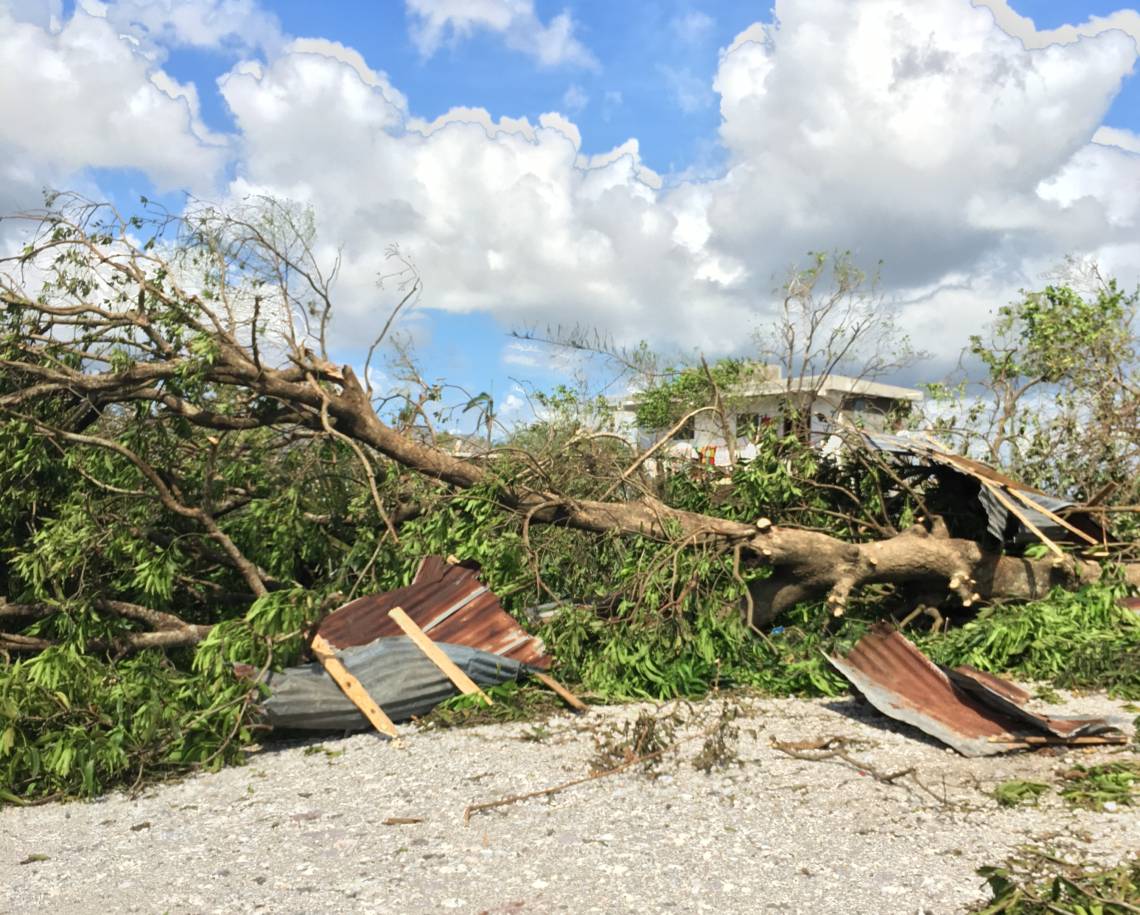
We make our way down the hill to the town. It looks like a disaster zone, roofs partially or entirely ripped off, trees and debris everywhere blocking access to many of these areas. We drive as close as we can. We have to leave the car and walk to the heavily damaged church we are supposed to visit. A large tree blocks the road. We climb over it carefully and venture on.

With the devastation and difficulties accessing the site, it is a slow journey to the Eglise Ste Anne de Camp-Perrin. What remains of the church stands utterly destroyed. The roof is completely missing. Only a few walls and the crucifix remain.
We inspect the house of a family who asked the office in Port-au-Prince to assess, but due to the impassable terrain, we could only see it from a distance. The roof is gone, but the structure is still in place. They are among the lucky ones, relatively speaking.
![]() With time is running short and a long, bumpy, six-hour drive back to Port-au-Prince ahead, we leave Camp-Perrin and start our way back. As we bump along, my thoughts turn to the people we saw today. Many were engaged in cleanup and debris removal, but I cannot help but think of the woman standing in the damaged church. Her arms outstretched, praying in Creole. I wonder, is she asking for help? Has she lost someone? Is she seeking comfort, or just asking “why us?” Haitians are such a resilient people. They go through so much and yet, they persevere. I look through my camera at the images and video we took today, knowing there is even worse ahead. With the road conditions being what they are, I have no chance for sleep as we return to Port-au-Prince.
With time is running short and a long, bumpy, six-hour drive back to Port-au-Prince ahead, we leave Camp-Perrin and start our way back. As we bump along, my thoughts turn to the people we saw today. Many were engaged in cleanup and debris removal, but I cannot help but think of the woman standing in the damaged church. Her arms outstretched, praying in Creole. I wonder, is she asking for help? Has she lost someone? Is she seeking comfort, or just asking “why us?” Haitians are such a resilient people. They go through so much and yet, they persevere. I look through my camera at the images and video we took today, knowing there is even worse ahead. With the road conditions being what they are, I have no chance for sleep as we return to Port-au-Prince.
It is now 9:20 pm. Our arrival in Port-au-Prince ends a grueling 17-hour day of assessments. As the humanitarian relief continues, I know we will need to drive deeper into the affected areas like Les Anglais, Tiburon, and Jeremie to get overall damage assessments. But for now, we unpack and sleep.


